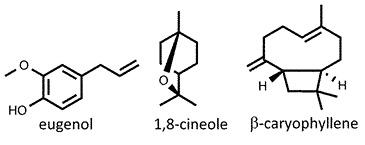 Pimenta dioica
Pimenta dioica
allspice • pimento
Back to “Culinary herbs: allspice leaves (Pimenta dioica)*; pimento leaves (Pimenta dioica)*”
Back to “Spices: allspice (Pimenta dioica)fr; pimento (Pimenta dioica)fr”
Pimenta dioica (L.) Merr. (= P. officinalis Lindl.) (Myrtaceae); pimento, jamaikapeper (Afrikaans); piment, poivre de la jamaïque, poivre giroflée (French); Piment, Allgewürz, Nelkenpfeffer (German); pimento (Italian); pimenta-da-jamaica (Portuguese); pimienta de Jamaica (Spanish)
DESCRIPTION The dried, unripe fruits are hard, dark greyish-brown in colour and crowned by a small ring representing the calyx. They are 4–5 mm (ca. ⅕ in.) in diameter in Jamaican allspice or slightly larger (5–6 mm or ca. ¼ in.) in Mexican allspice.1 The strong fragrance is similar to that of cloves but with elements of cinnamon, nutmeg and black pepper (hence the name allspice).
THE PLANT An evergreen tree of about 12 m (40 ft) high with leathery leaves, small white flowers and fleshy, dark purple fruits. Male and female flowers occur mostly on different plants (hence the Latin name dioica).
ORIGIN The tree is indigenous to Central America and the West Indies.2 Spanish explorers introduced the spice to Europe in the 16th century. Jamaica remains the principal producer of high-quality allspice.1
CULTIVATION Plants require humid, tropical conditions and are grow in plantations (called “walks”). Freshly harvested seeds are sown and the seedlings transplanted while still quite small. They require deep, well-drained soil and regular watering and feeding. The trees are killed by frost and drought.
HARVESTING The fully developed but green (unripe) fruits are hand-picked. They are left to “sweat” for a day or two and are then dried in the sun. Essential oil is distilled from the fruits or the leaves.1
CULINARY USES Allspice has become popular in some Western and East European countries, initially as a spice to replace cardamom. It is used to flavour a wide range of dishes, including meat stews, sausages, salted beef, pork, meat pastries, pickles, sauces and stuffings. Allspice is an essential ingredient of Caribbean cuisine (e.g. jerk seasoning). It is used in Scandinavian smorgasbord, as well as fish, cheese and vegetable dishes. Mexicans use it in moles. Allspice is popular in Great Britain, where it is used in stews, sauces, confectionery, puddings and the traditional Christmas cake. Jamaican pimento dram and French liqueurs such as Benedictine and chartreuse are flavoured with allspice.2 The spice, fruit oil or oleoresin extracts are commonly used in food processing, especially to flavour charcuterie items such as sausages, ham, salami and canned meats, as well as curry powders, condiments, relishes, ketchup, pickling spices and gravy mixtures. Leaf oil is used in ice creams, puddings, confectionery and liqueurs.
FLAVOUR COMPOUNDS The flavour is due mainly to eugenol (the dominant component in both the fruit and leaf oil), but minor compounds such as 1,8-cineole, methyleugenol, β-caryophyllene and α-phellandrene add to the complexity.3 The astringent taste is due to tannins.4

NOTES Bay rum oil, distilled from the leaves of Pimenta racemosa, is traditionally used in cosmetic products especially for male fragrances (e.g. Old Spice) but this species or its fruits are not used to any extent for culinary purposes.
1. Farrel, K.T. 1999. Spices, condiments and seasonings. Aspen Publishers, Gaithersburg, USA.
2. Mabberley, D.J. 2008. Mabberley’s plant-book (3rd ed.). Cambridge University Press, Cambridge.
3. Harborne, J.B., Baxter, H. 2001. Chemical dictionary of economic plants. Wiley, New York.
4. Kikuzaki, H., Sato, A., Mayahara, Y., Nakatani, N. 2000. Galloylglucosides from berries of Pimenta dioica. Journal of Natural Products 63: 749–752.